Understanding the elements of plot in a story is one of the cornerstones of reading comprehension. Think about when you finish a novel or book. How do you go about recommending it to a friend? You likely summarize some of the high points in the story, share details about the characters, setting, and main events, and maybe tease the problem and possible solution to convince them that it was a great book!
Understanding plot and everything connected to it is essential if we want to understand and enjoy fictional texts. If students can master plot structure, they will have the ability to read and enjoy so many fictional texts.
What is plot structure?
Plot structure is is the way a story is written. Fiction texts usually follow a similar plot structure. The text begins with a hook or exposition. Then, a problem is introduced. The character will struggle to find a solution for the problem, creating the rising action. The climax is when the character comes face-to-face with the problem, creating the most exciting point in the story. From here, the story then winds down with falling action, and ends with the resolution.
Even if you’ve never explicitly taught the elements of plot in a story, I’m sure hearing this overview reminds you of many stories you’ve read.
Why is teaching the elements of plot in a story so important?
Teaching the elements of plot in a story provides students a framework for understanding fictional stories. It gives them a roadmap that helps them predict what will happen in a story, make connections between stories, and summarize what they read.
It also helps them make connections between all the other key story elements. Plot structure is basically the events or the “what” of the story. It is the connection between the characters, setting, problem, solution, and theme. When students become aware of the basic elements of plot in a story they start to see similar story arcs in a variety of texts. Because most fiction texts follow such a similar plot structure, helping students understand plot will have a positive impact on the rest of their fiction reading experiences.
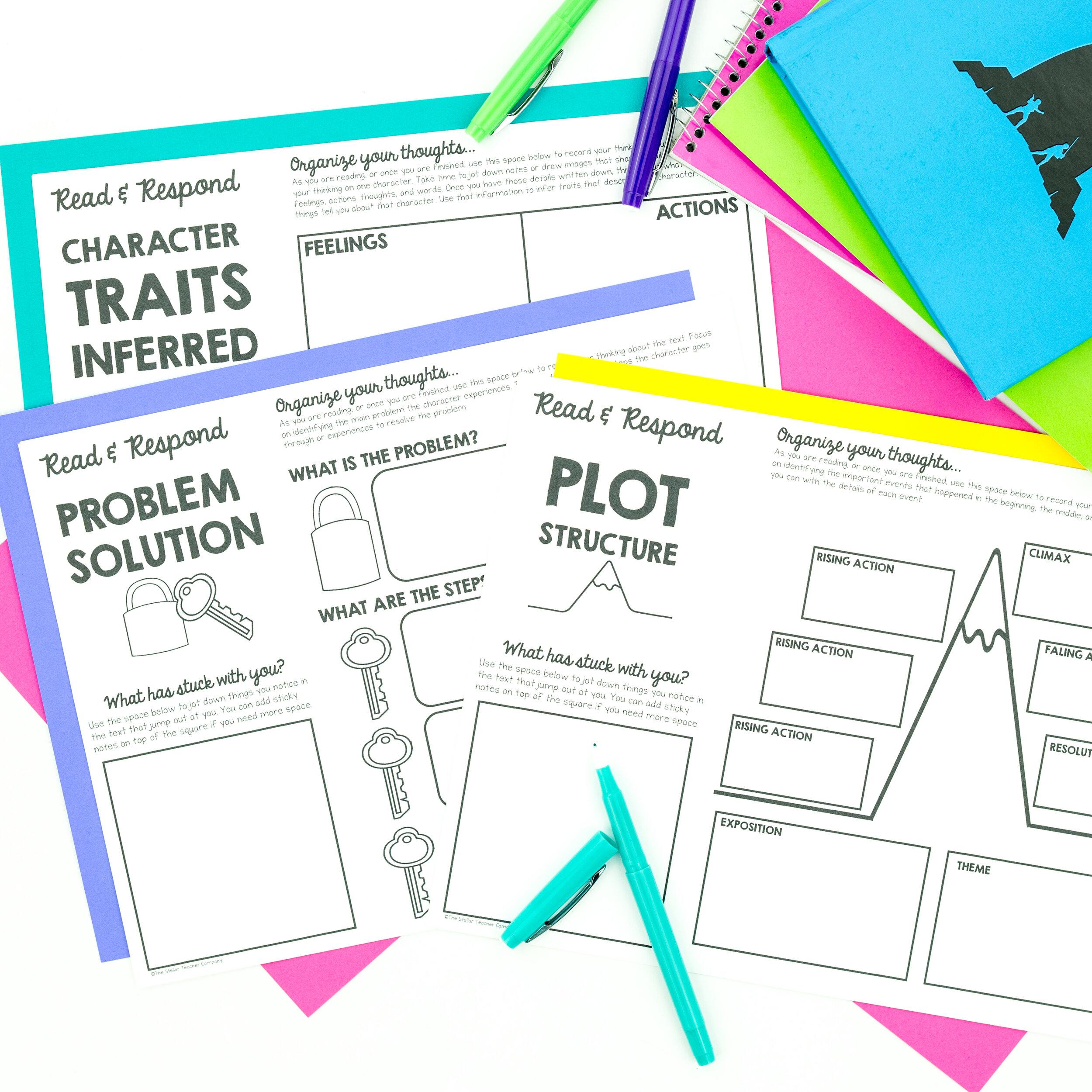
What Should I Teach During My Plot Unit?
When you think about the lessons you want to teach during your plot unit, you want to think about what your students already know, and what they need to learn in order to be successful understanding the fiction texts you will read this year. You also want to give some consideration to any plot-related questions they might be asked on the end of year standardized test.
I typically suggest spending around 2 weeks covering plot-related objectives.
Here are some objectives you might want to consider including in your unit on plot:
- Most fictional stories have the same key story elements (character, setting, problem/solution, theme)
- Authors often use the Story Mountain to help structure and organize their story.
- The Elements of Plot: Exposition, Rising Action, Climax, Falling Action, Resolution
- Readers can use events that have already happened in the story to help predict what might happen next.
- Fictional stories often have a problem and a solution.
- Readers can infer a possible solution and can find text clues to support their thinking.
- The characters we read about can often experience different types of conflict. (man vs. self, man vs. man, man vs. nature, man vs. society)
- Authors sometimes use flashbacks in their writing to share more information about a character or event with the reader.
- Authors sometimes use foreshadowing to hint at what might happen next.
- Authors don’t always resolve every problem by the end of the story.
- Readers can use the story mountain or key story elements to help them summarize fictional stories.
Now keep in mind you might not need to teach every single one of these objectives to your students, and you don’t have to teach them all at once. If you don’t typically read texts with foreshadowing or flashbacks, you can save those objectives until they come up in your read aloud later in the year.
Some of these objectives might take students longer to fully understand and master. This is a lot of academic language that is connected to understanding fictional texts and it’s ok if your students haven’t mastered the objective after a single lesson.
Side Note: If you plan on teaching all of these objectives listed above, definitely consider joining us inside The Stellar Literacy Collective – our entire unit on plot is centered around these objectives.
But you can also get resources that support these objectives with this resource on TPT.
Mentor Texts for Elements of Plot in a Story
Anytime I am teaching plot, I like to look for picture books that follow the traditional plot structure. Reading a short picture book that has characters, setting, a clear problem, solution, and theme can make it easier for students to identify the various elements.
Here are some of my favorite mentor texts that have very easy to identify elements of plot in a story:
The Name Jar by Yangsook Chai
Each Kindness by Jacqueline Woodson
A Bad Case of Stripes by David Shannon
- Enemy Pie by Derek Munson
Lily’s Purple Plastic Purse by Kevin Henkes
When I’m thinking about my unit on elements of plot in a story I’ll usually pick 1-2 picture books and use them as mentor texts for all of the lessons. So I might read aloud my students A Bad Case of the Stripes on Monday and then Tuesday – Friday come back to that same text to model and teach students how to make predictions, infer solutions, use the story mountain to summarize, etc.
Plot Structure Lesson Components
Begin with a whole group mini-lesson.
Whichever objectives you are planning on teaching to your students, plan on introducing them during a whole group lesson. I like to use mini-lessons to teach comprehension strategies to my students, if you’ve never used a mini-lesson before, you can learn about them in this post.
Start your lesson by introducing the objective. I like to use an anchor chart or some other visual to help students understand the objective. Then I like to model or show an example of what this looks like in the mentor text. I typically won’t read the ENTIRE text during the mini-lesson, but just show students the part of the text that is connected to the objective.
Before our whole group lesson is over, we will discuss and review what we learned and I also like to give students a smaller version of the anchor chart to glue in their reading journals when they go back to their desks.
Once I have taught a whole group lesson for the specific plot objective, I will…
Encourage students to practice during independent reading.
Ultimately, we want students to become independent with the skills we are teaching them during our whole group lesson, so I like to remind and encourage them that if they are reading independently, they should be looking for the same elements of plot in a story they are reading on their own.
I like to share the following resources with students to help encourage them to think about plot on their own:
- Mini Anchor Charts or Strategy Cards
- Graphic Organizers
- Question or Thinking Stems
- Stop and Jot Sticky Note Templates
Now hopefully students will practice independently, but if you notice that a student isn’t getting enough practice understanding the elements of plot in a story, or you want to give them a little extra support, you can
Reinforce in small groups.
It’s important to remember that just because you taught all of the elements of plot in a story during a whole group lesson doesn’t mean that 100% of your students will master it. You might need to pull a few students for a small group lesson to review some of the plot objectives.
But even if you don’t have to reinforce plot structure during a small group, it’s still a good idea to
Spiral review and continue to practice.
Ultimately you will continue to reinforce and review the elements of plot in a story throughout the entire year. Consider some of the following activities or ideas to keep plot structure top of mind for your students all year long:
- Using a picture of the day routine to review plot structure as part of your reading warm-up or spiral review.
- Incorporate plot activities into your reading workstations or literacy centers.
- Occasionally send home plot-based homework, even if you’re onto teaching nonfiction.
- Anytime you read a fictional text to your students be sure to identify the elements of plot.
- Communicate plot structure to your parents and get them on board to help their kids understand plot at home.
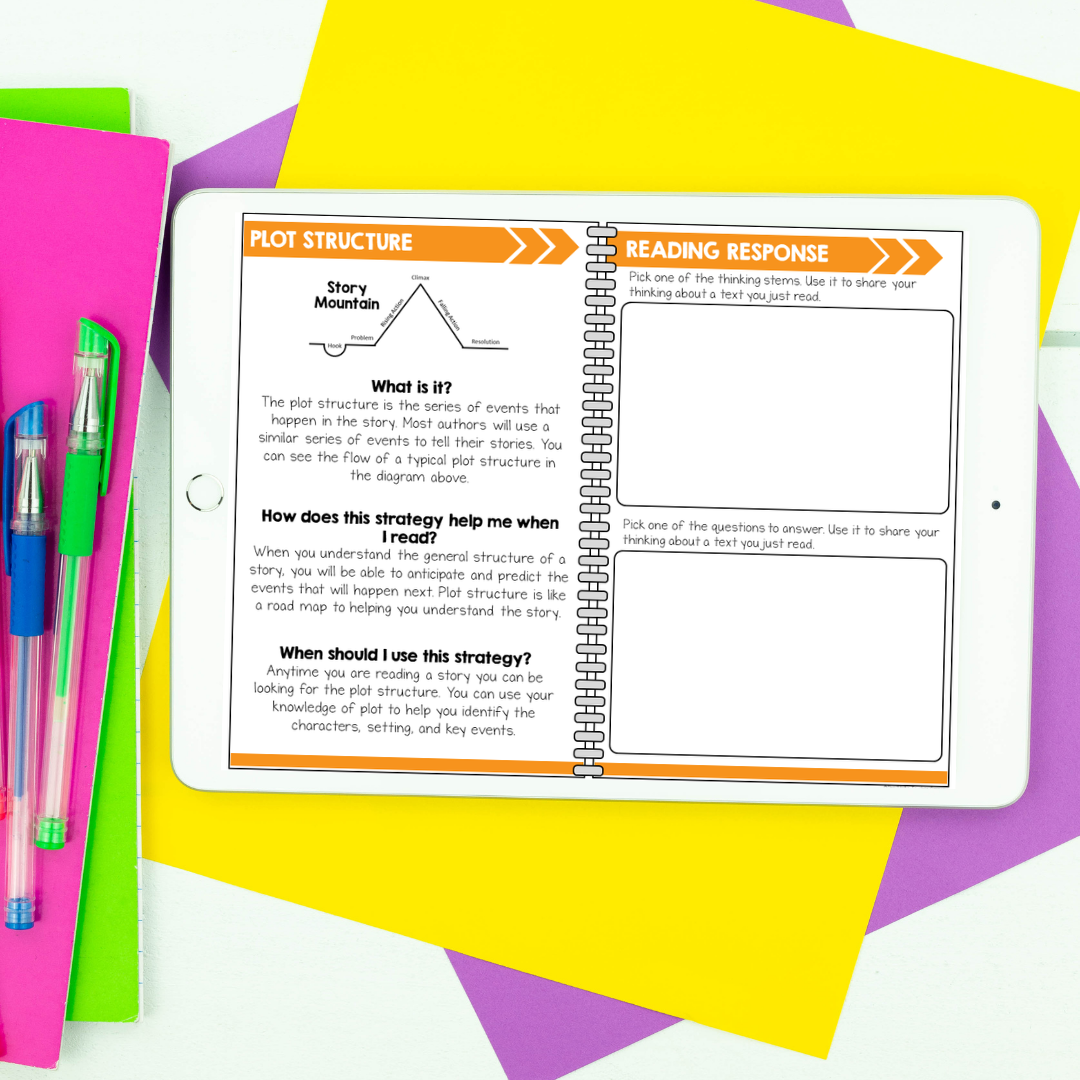
Using these ideas, your students will have more success with understanding the elements of plot in a story. If you like the idea of having access to all the resources mentioned in this post, then you might want to consider joining us inside The Stellar Literacy Collective. You’ll get access to everything you need to teach plot, plus so many other reading skills.
Happy Teaching!
Word Lists for Most Common Prefixes & Suffixes
Teaching word study is important in upper elementary. Grab this free download to get a list of the 15 most common prefixes and the 15 most common suffixes. If you teach these prefixes and suffixes to your students, they will have the tools to read and understand over 90% of all words with prefixes and suffixes!
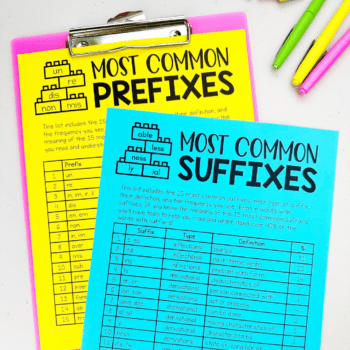
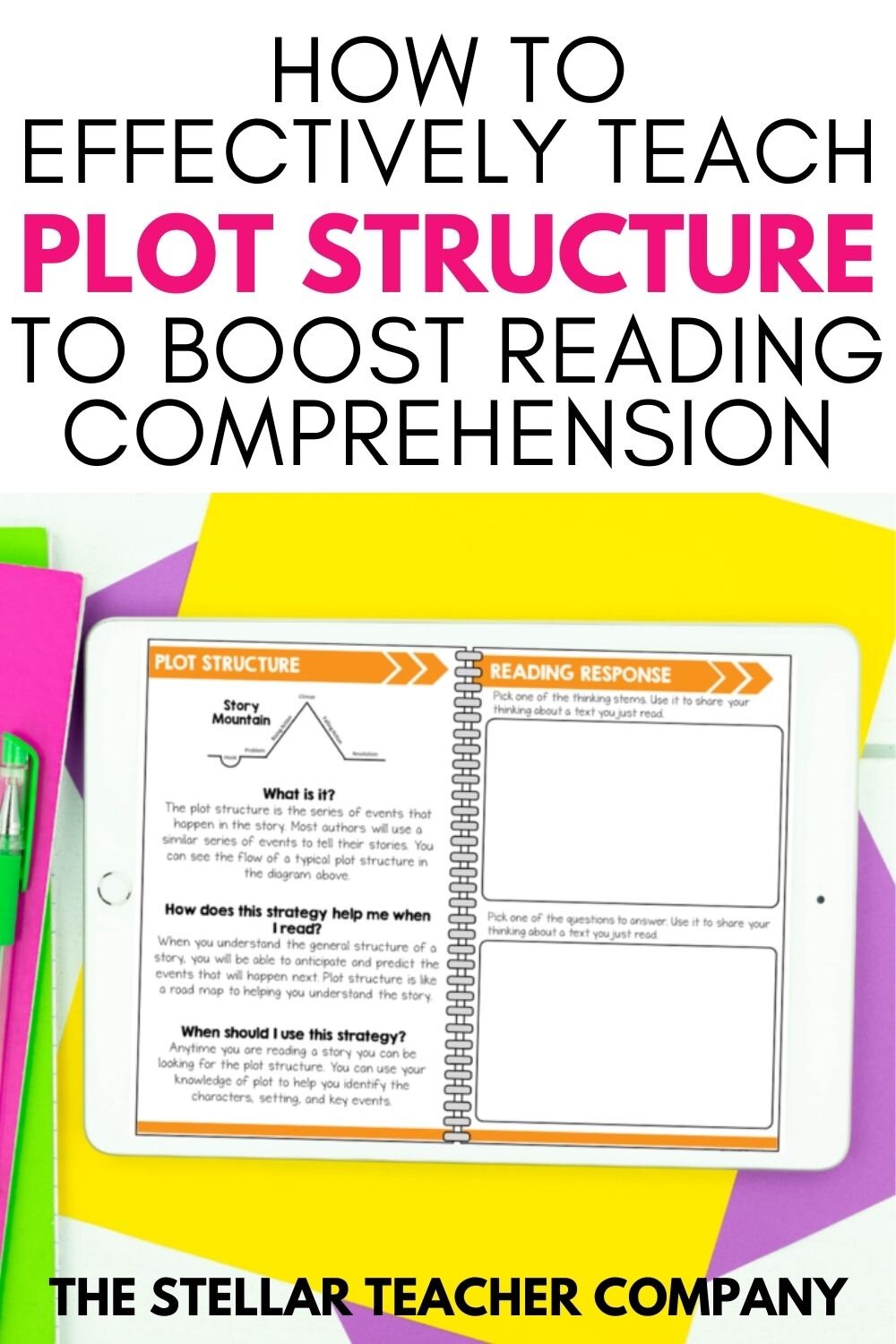

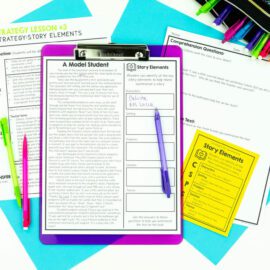











Leave a Comment
You must be logged in to post a comment.